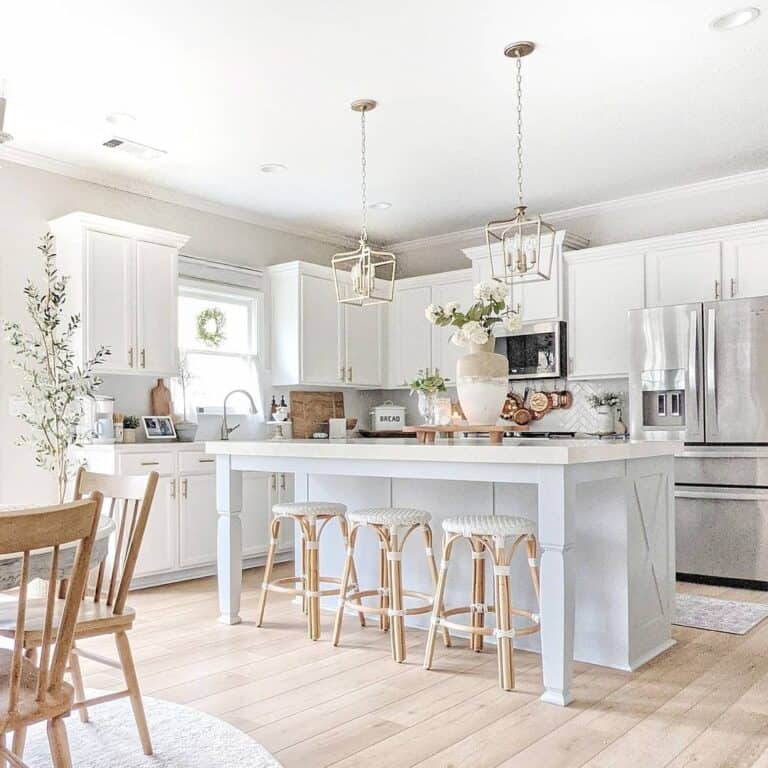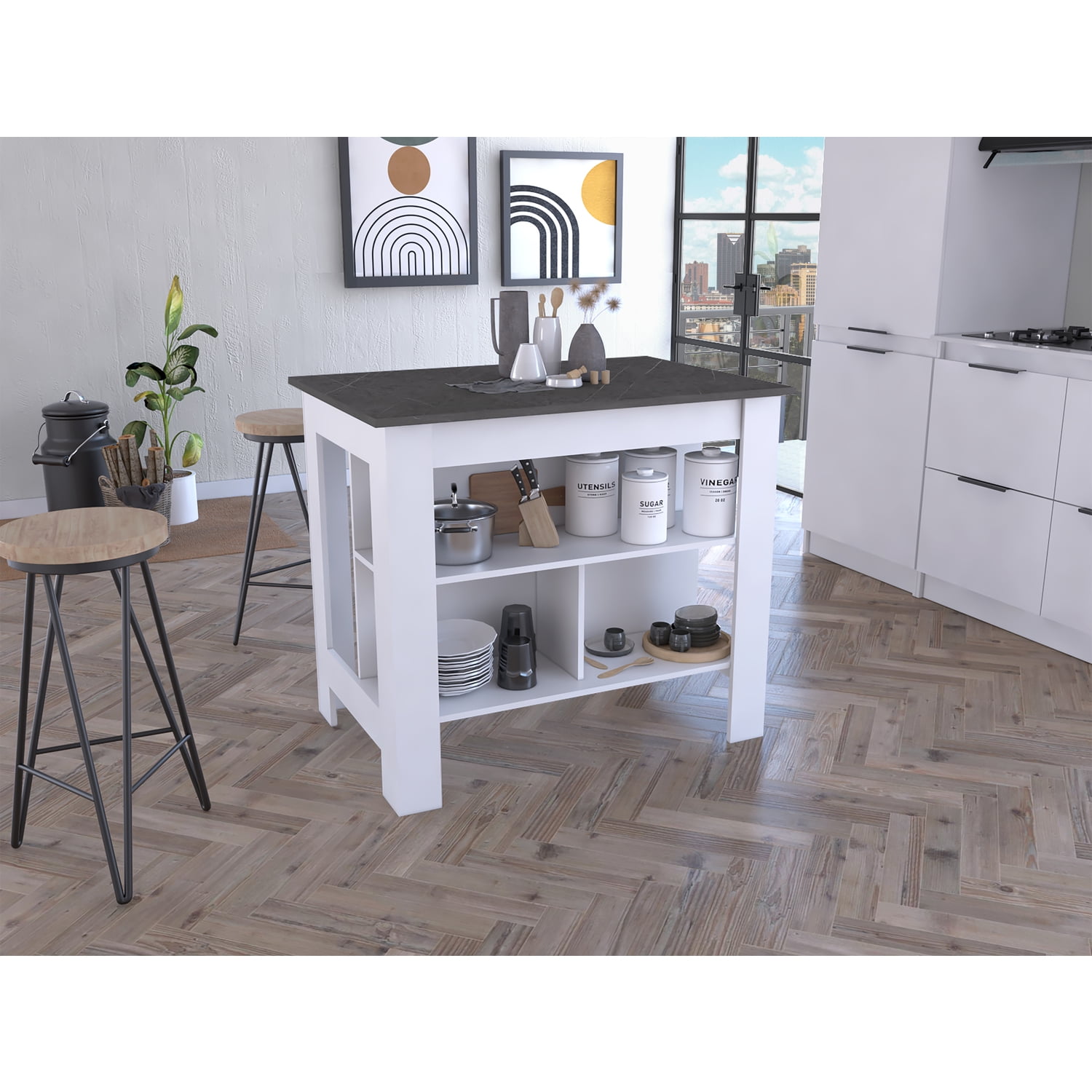Make Your Kitchen Island Stand Out with Custom Legs For Kitchen Island
Secret Factors To Consider for Locating the Ideal Legs For Kitchen Area Island for Your Design
When picking the suitable legs for your cooking area island, a number of vital considerations enter play that can dramatically affect both functionality and visual appeals. The selection of style, product, and elevation need to align with your total kitchen area layout to make certain a harmonious look. Furthermore, stability and maintenance needs are essential for long-term usage and simplicity of care. Understanding these aspects can improve your kitchen area's usefulness and visual appeal, yet the nuances of each factor to consider can commonly be overlooked. What effects might these options have on your kitchen's total ambience?
Determine Your Design Preference
When picking the suitable legs for your kitchen island,Determining your style choice is vital. The legs of your kitchen area island not only serve a useful purpose however additionally add significantly to the overall aesthetic of the space. Therefore, recognizing your layout style-- be it contemporary, rustic, standard, or commercial-- is vital.
For a contemporary kitchen area, take into consideration smooth, minimalistic legs that enhance open spaces and tidy lines. On the other hand, a rustic setup might gain from even more durable, farmhouse-style legs constructed from reclaimed products. Typical cooking areas commonly favor turned or elaborate legs, which can add a touch of elegance and class. Meanwhile, a commercial visual may call for steel legs that highlight a raw, incomplete look.
In addition, consider the elevation and percentage of the legs in relation to the island's surface area. Inevitably, your style preference will certainly influence not only the selection of legs however also the overall consistency of your cooking area's style.
Select the Right Product
Selecting the best material for your kitchen area island legs is critical in guaranteeing both longevity and visual allure. Different materials provide distinctive benefits, and the selection commonly shows your style choices and useful needs.
Timber is a popular choice, offering warmth and adaptability. It can be discolored or repainted to match your kitchen area decor, making it versatile to numerous styles, from rustic to contemporary. Wood may need routine maintenance to maintain its appearance and honesty.

If you seek a special touch, consider acrylic or glass materials. They can develop an illusion of space and lightness in your kitchen, making them an outstanding selection for smaller sized areas - Legs For Kitchen Island. These alternatives may need mindful handling and upkeep to avoid scratches.
Ultimately, the product you pick ought to straighten with your kitchen's total design, ensuring that the legs serve both decorative and functional objectives.
Take Into Consideration Elevation and Proportions
When creating a cooking area island, height and proportions play a critical duty in making sure capability and comfort,. The standard elevation for a kitchen area island commonly varies from 36 to 42 inches, lining up with standard counter elevations or bar elevations, respectively. This dimension is important for integrating with bordering stools and countertops, making it possible for convenience of usage throughout meal preparation and social communications.
In addition, the island's proportions should match the overall kitchen layout. A well-proportioned island should not bewilder the room; instead, it should produce a well balanced visual. Consider the proportion in between the island's size and size, ensuring it offers sufficient area without crowding the kitchen area. A general guideline is to keep a size of 24 to 48 inches, facilitating activity and availability.
Moreover, the elevation of the legs or base can influence the aesthetic charm and capability. Taller legs might provide an extra modern, ventilated feel, browse around here while much shorter ones can stimulate a conventional, grounded appearance. Eventually, meticulously considering height and percentages will lead to a kitchen island that is both functionally efficient and visually enticing, boosting the total style of the area.
Assess Stability and Resilience
A cooking area island's legs should not just match its height and proportions yet likewise offer adequate stability and toughness to sustain everyday tasks. The legs are necessary to the overall performance of the island, as they birth the weight of the kitchen counter and any kind of added tons, such as devices or cooking tasks.
When evaluating security, it is vital to take into consideration the leg layout and material. As an example, durable steel or solid wood legs frequently supply remarkable stamina contrasted to lighter products like engineered wood or plastic. In addition, a bigger base can boost stability, decreasing the threat of tipping or tottering throughout use.
Resilience is just as important; the legs must stand up to damage from daily usage. Think about coatings that protect versus scrapes, damages, and wetness, specifically in a kitchen setting. Furthermore, assess the quality of construction, such as joints and fastenings, which can considerably influence the legs' long-term efficiency.
Eventually, spending in well-crafted legs that prioritize security and toughness will certainly guarantee your cooking area island stays a dependable work space for years to find, boosting your culinary experiences while keeping visual appeal.
Consider Maintenance and Treatment
Maintenance and treatment are critical considerations for guaranteeing the longevity and efficiency of kitchen island legs. When choosing legs, it is essential to review the materials made use of, as various alternatives require differing degrees of upkeep. As an example, wood legs might require periodic refinishing or sealing to protect against moisture damages and scrapes, while steel legs might need routine brightening to maintain their luster and avoid rust.
Additionally, the finish used to the legs can influence upkeep needs. A high-gloss covering may be simpler to tidy however might show fingerprints and scrapes quicker than a matte surface. It is advisable to pick products and surfaces that complement your way of living; for instance, if you often host celebrations, choose long lasting products that can stand up to wear and tear.
Furthermore, consider the cleaning procedure associated with useful link maintaining these legs. Smooth surface areas commonly need very little initiative, while detailed layouts might accumulate dirt and crud, necessitating more labor-intensive cleaning methods. Legs For Kitchen Island. Inevitably, factoring in the upkeep and treatment required for your picked cooking area island legs basics will certainly not only improve their visual allure however also guarantee their useful honesty over time
Final Thought
To conclude, choosing the ideal legs for a cooking area island necessitates cautious consideration of different aspects, including layout style, product choice, height, security, and upkeep. Each element plays an important role in ensuring that the legs not only boost the visual allure of the kitchen however also supply the needed assistance and toughness for day-to-day usage. A well-informed decision will inevitably contribute to a practical and aesthetically pleasing kitchen environment.
The legs of your kitchen island not only serve a practical purpose but additionally contribute considerably to the overall aesthetic of the space.Maintenance and care are important considerations for ensuring the durability and efficiency of cooking area island legs. Wood legs might need periodic refinishing or sealing to avoid dampness damage and scrapes, while steel legs may need normal brightening to maintain their luster and prevent corrosion.
Ultimately, factoring in the upkeep and care needed for your chosen kitchen island legs will certainly not just enhance their aesthetic charm but likewise guarantee their functional stability over time.
